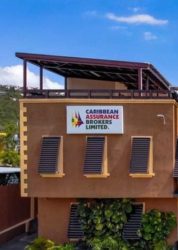Grace Kennedy posted increased profits in spite of a one-time charge of $216 million in the first quarter of this year. The charge relates to the write-off of premiums on investments that were swapped in the government debt exchange in February. The improved results flowed from revenues which were up to $16.5 billion in the quarter from $15.85 billion in 2012 and profit before tax $1.14 billion and $689.7 million after tax and minority interest, slightly more than the $652 million netted in 2012.
NDX plunged the banking and finance division into an operating loss of $7 million, down from $209 million in 2012. The trading operations more than doubled operating profit from $22 million to $55 in 2013. All other divisions contributed moderate increases to the groups operating results for the quarter.
Growth markets | Management stated that the food division performed well with improved profit. Jamaica, Canada, Belize and the USA were leading markets for them. Grace‘s international business benefited from marketing efforts with the main focus on consumer acceptance. The focus on newer markets is going well. The west coast of America expansion is on target whilst they have seen gains in shelf space in the UK top retail chains. Lower yields on government bonds have forced shifts within some of the group companies. Other segments within the group will benefit from lower cost of funds as interest rates on some instruments have declined since the NDX.
This year’s results are commendable. If the company can maintain or improve upon the first quarter numbers, earnings for the full year could beat last year’s and the year’s results could come in around $11 per share. The group has also increased the dividend payout to shareholders making the stock a bit more attractive with a 17 percent increase in the last one paid out in March.
Financial position | Grace’s finances are in good health. Assets amount to $104 billion including fixed assets of just $7 billion. Liabilities are $72 billion. Equity capital is $30.7 billion.
With economic growth in the local economy at low levels and likely to be that way for some years, Grace needs to look outside Jamaica for higher growth levels than they have been enjoying having been dominant in most areas that it operates in the local market.
The stock is cheap, selling at around 5 time earnings. Growth has not been great and may not be so for a while, but with the present price between $55-56 per share the stock has lots of room to grow. It is worth a serious look.










